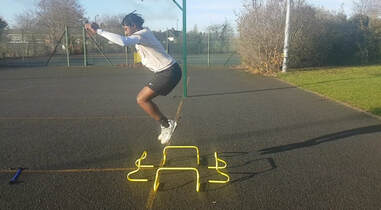 Plant-based diets have taken root in many cultures around the world in recent years, mostly thanks to the growing realisation about the health benefits of this eating pattern. But contrary to what some people think, plant-based doesn’t necessarily mean you must forego all animal products. Rather, you might just eat meat or dairy products less frequently, or in smaller portions. To replace those lost calories, you should eat more beans and legumes, vegetables, whole grains, and fruits. These mostly low-fat, nutrient-rich foods have been linked to improvements in many health-related issues, including high blood pressure, diabetes, and heart disease. A plant-forward diet also can help reduce your food budget. And there’s yet another reason to feel good about this eating pattern: it helps preserve our planet’s health. A diet that contains only small amounts of animal foods requires a fraction of resources such as water, energy, and land to cultivate, and it generates fewer greenhouse gases. What’s more, by eating unprocessed or minimally processed foods, you avoid the additional energy and packaging that go into the production of processed foods. “Following a plant-based diet may be an important way to reduce your carbon footprint. Research suggests that diets high in red meat account for five times the emissions of plant-based diets. Plant Based Diet And Fitness The stereotype of the weak, skinny vegan has become so universal that most people would have a hard time believing any person of significant size or strength didn’t eat meat or other animal products. This is because we’ve been conditioned to believe that you need to eat lots of animal protein to build muscle and strength, and that protein only comes from animal foods. Of course, only one of those two beliefs are true, as anyone who has ever seen a (herbivorous) silverback gorilla can easily deduce. Most people, however, seem to think humans are more like lions, requiring meat or some form of animal protein at every meal to get big and strong. There are many reasons for how this myth became so ingrained in the popular culture, but the reality is that from the hippie culture of the 60s until recently, a lot of those who followed a plant-based diet were skinny. This is partly because, for several decades, most people who chose meat/animal-free diets did so solely for ethical, environmental or health reasons, and didn’t really care about having big muscles. Those who did care often lacked the basic nutritional understanding necessary to build muscle and strength eating plants. What About Protein The idea that you can’t get enough protein from plants, and/or that sources of plant protein are “inferior”, has no basis in science. What is backed up by scientific research is how much protein (animal or plant) is required to increase and/or maximize size and strength. While the majority of people only need to eat about 0.8 grams of protein per kilogram of bodyweight (g/kg) per day — or 0.36 grams per pound (g/lb) — to maintain good health, research focused on gaining muscle and strength has consistently shown that considerably more protein is required. Current research suggests that most athletes require between 1.2-2.0 g/kg , with endurance athletes on the lower end of the spectrum (, and bodybuilders and strength athletes toward the upper end (≥1.6). If your goal is to increase muscle mass and strength as quickly as possible, like professional bodybuilders or powerlifters aim to do, research shows that as much as 2.2 g/kg can be effective. Vegan Chocolate Brownie Ingredients
Method
Roasted Butternut Squash and Israeli Cuscus Ingredients
3 Comments
 If you’re thinking ‘I’m no Olympian, Super Athlete, so why would I need to do plyometric exercises?’, the answer is simple. If you’re looking to improve your mobility or just looking to get the most out of your gym session, then plyometric exercises are for you. Plyometric training will improve your speed, agility, balance, power, coordination or even help you burn more calories, and will make you a more efficient exerciser – because it trains the body to produce more force for less energy expenditure. It’s not just for athletes, but useful for anyone looking to take their training and fitness to new heights. Plyometric exercises were invented to improve athlete power and explosiveness. Plyometrics comes with several benefits, but it’s arguably one of the most misunderstood and misused training methods out there, in fact most people will think jumping on a box eg. 4X30 at the end of their training session is plyometrics, when they are really just improving their cardiovascular strength. Discovered by sport scientist and track coach, Yuri Verkhoshansky, plyometric training can be best described as a method that forces muscles to undergo significant tension as quickly as possible. The muscle is in a relaxed state before it undergoes this great muscle contraction, which means that a plyometric jump, for example, is not preceded by a running start, but from standing with two feet planted on the ground. BENEFITS OF PLYOMETRIC EXERCISES 1. PLYOMETRIC WORKOUTS DON’T TAKE LONG The foundation of the plyometric training method stems from the fact that the quality of each plyometric exercise should be high, but the volume must be low. For example, plyometric box jumps should not be performed without end, or to the point of complete physical fatigue. Instead, they should be used as a way of stimulating the nervous system – enabling the body to jump as high and quickly as possible from a relaxed state. ‘What about the 3×30 box jumps that are in my workout’ you say? Perform these with caution! This type of training will work your cardio fitness, but it doesn’t qualify as plyometric training. The nervous and physical energy required to perform an exercise such as box jumps is high, which means that performing many them can mean you become overly fatigued and injury is more likely. 2. PLYOMETRIC EXERCISES IMPROVE YOUR GAME – WHATEVER IT IS Using plyometrics to increase the power of your upper body is important if you have hit a plateau in your training and are looking to experience a different style of training. If you’re a basketball player, baseball player, or football player, you can use plyometric exercises to improve the power of your throws and hits (as if having perfectly sculpted arms wasn’t reason enough!) It is understandable that, for most of the population, the idea of performing a plyometric move, such as a clapping push-up, sounds scary and close to impossible. But rest assured, there are several less demanding plyometric moves you can do to work on your upper body. 3. PLYOMETRICS MAKE YOU A FASTER RUNNER Our body is composed of fast- and slow-twitch muscle fibers that can be fine-tuned and adapted to our lifestyle. A long-distance runner utilizes mainly their slow-twitch muscle fibers that help them tackle endurance workouts. Alternatively, sprinters, or any athlete requiring bursts in speed, will master their fast-twitch muscle fibers as these help them exert maximal force in a short span of time (the downside being that they fatigue quickly). This is important to understand as plyometrics concentrates on your fast-twitch muscle fibers, which can improve power and keep you at the top of your game. If you would like to learn more about plyometrics exercise that can be of benefits for your email info@tranquility360fitness.com or DM us on Instagram @tranquillity360fitness |
AuthorsThis blog is updated by Tranquillity 360 fitness personal trainers, as well as other guest bloggers. Archives
July 2021
Categories |

 RSS Feed
RSS Feed